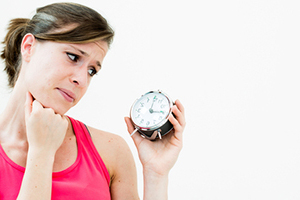[sp testIds=”2TF”]
 Who would have thought that something as simple and harmless as daylight savings could actually spell trouble… in the form of a heart attack!
Who would have thought that something as simple and harmless as daylight savings could actually spell trouble… in the form of a heart attack!
A study published in the New England Journal of Medicine investigated the incidence of heart attacks before and after the one hour daylight saving adjustment. And their findings were shocking.
Before we identify the connection, it is important to know about circadian rhythms. These are biological cycles or rhythms that are controlled by an organ called hypothalamus in the brain. The rhythms are perfectly synchronized with the 24 hour day period with the help of sunlight and other environmental cues.
The interesting aspect is that it is this circadian rhythm that controls different activities in the body including hormone levels, sleep/wake cycles, behavior, feeding, thermoregulation and also cardiovascular activity. So, now we know that any changes in the circadian rhythm can have an impact on the heart.
In fact, the risk of heart attack is highest in the morning, that is, it is 40 percent more likely to occur in the early morning than at any other time!
The reason for this shocking difference arises from the fact that our cardiovascular system is in the most compromised state in the early hours of morning.
The systolic blood pressure and heart rate is usually highest and the blood vessels find it difficult to dilate quickly enough for the blood flow. This increases the chances of blood clots forming.
The system of daylight savings is predominantly followed in North America and Europe during the fall and spring season. Circadian rhythms take time to adjust to the new time. For a few mornings, one hour of sleep lost means that the cardiovascular system is more compromised in the early morning than before.
A study conducted in 2009 has been published in the New England Journal of Medicine. The researchers investigated the incidence of heart attacks before and after the one hour daylight saving adjustment. They found out that individuals were at a 5 percent higher risk of developing a heart attack after the clock adjustment in spring.
The best solution is to take the daylight saving easy. Those who are at a high risk of developing cardiovascular disease can change the clocks more gradually, starting with 15 minutes and then bringing it up to one hour until the body has time to adjust.
[sp id=”2TF”]

 Overcoming IBD
Overcoming IBD Multiple Sclerosis
Multiple Sclerosis Banishing Bronchitis
Banishing Bronchitis Gum Disease Gone
Gum Disease Gone Overcoming Onychomycosis
Overcoming Onychomycosis Neuropathy No More
Neuropathy No More The Prostate Protocol
The Prostate Protocol Brain Booster
Brain Booster
 Ironbound
Ironbound
 Solution for Shingles
Solution for Shingles
 The Bone Density Solution
The Bone Density Solution
 The Ultimate Healing Protocol
The Ultimate Healing Protocol
 The Parkinson's Protocol
The Parkinson's Protocol
 The Chronic Kidney Disease Solution
The Chronic Kidney Disease Solution
 Overthrowing Anxiety
Overthrowing Anxiety The Fatty Liver Solution
The Fatty Liver Solution The Hypothyroidism Solution
The Hypothyroidism Solution
 The End of Gout
The End of Gout The Blood Pressure Program
The Blood Pressure Program
 The Oxigized Cholesterol Strategy
The Oxigized Cholesterol Strategy
 Stop Snoring And Sleep Apnea Program
Stop Snoring And Sleep Apnea Program
 The Arthritis Strategy
The Arthritis Strategy The Vertigo & Dizziness Program
The Vertigo & Dizziness Program The 3-Step Diabetes Strategy
The 3-Step Diabetes Strategy Hemorrhoids Healing Protocol
Hemorrhoids Healing Protocol The Erectile Dysfunction Master
The Erectile Dysfunction Master Weight Loss Breeze
Weight Loss Breeze The IBS Program
The IBS Program The Insomnia Program
The Insomnia Program The Migraine and Headache Program
The Migraine and Headache Program The Neck Pain Solution
The Neck Pain Solution The Menopause Solution
The Menopause Solution The Ejaculation Master
The Ejaculation Master The TMJ Solution
The TMJ Solution The Acid Reflux Solution
The Acid Reflux Solution The Fibromyalgia Solution
The Fibromyalgia Solution The Psoriasis Strategy
The Psoriasis Strategy
So it's just the earlier start that is the problem and not the autumn return to standard time?
I do beleive this to be true
I feel better when dqayligt saving has finished for the yar I hate it
the information given is valuable. thnnk you
content not found. however, there's no 'daylight saving' system in my home country.
I detest it my body/mind never gets used to it I wake in the morning at 5amdst and the brain says it is really 4am getting supper look at the clock immediately detract 1hr leave process for a while only to realise that 2/3 hrs have pasted before I eat (much too late) Always feel tired, hate it!!!!!!!!